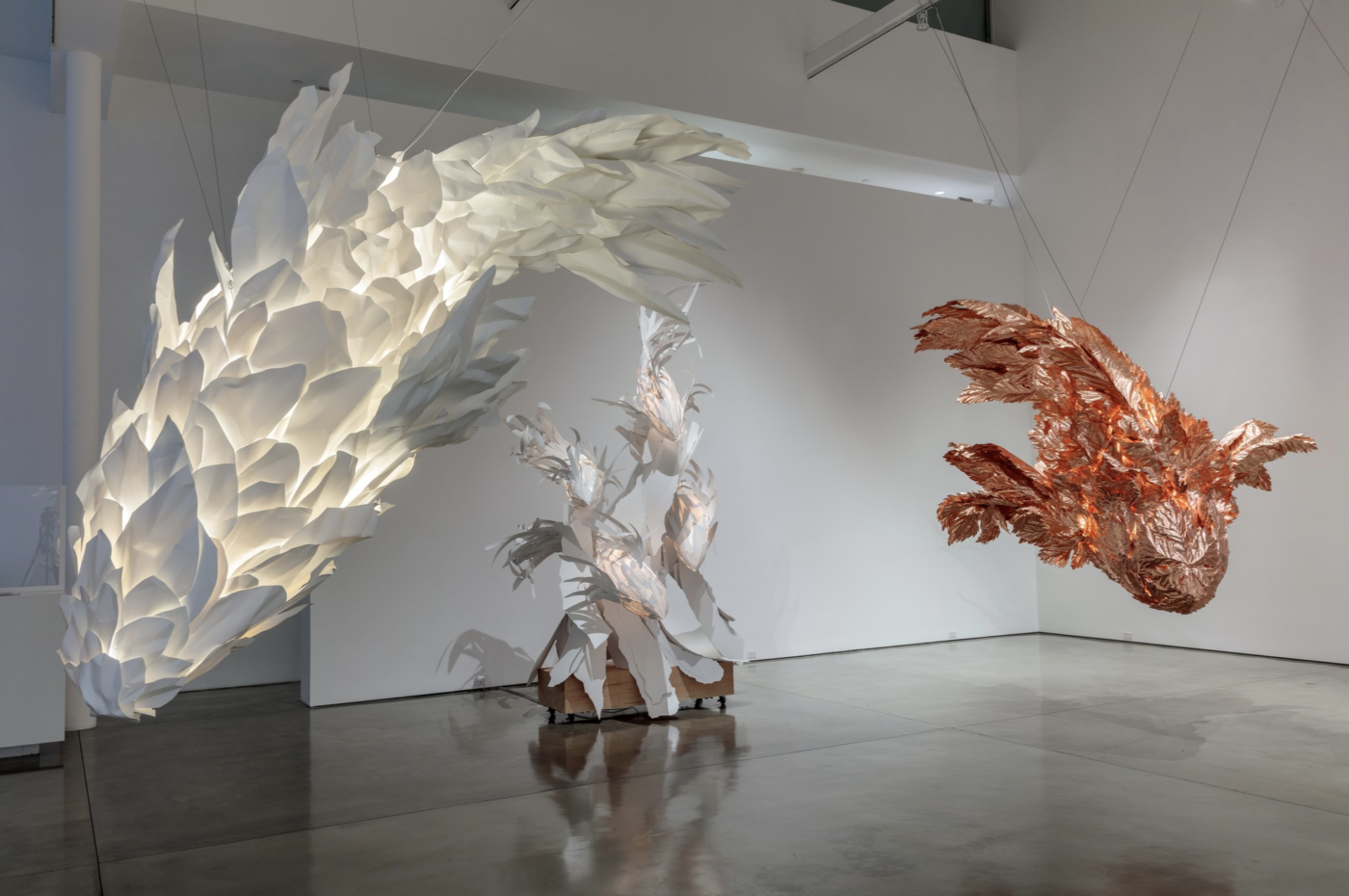The pair of shows on view at Gagosian, Frank Gehry’s “Spinning Tales” and Nancy Rubins’ “Fluid Space,” are as dissimilar as they are masterful. Two artists, whose works are to be found in the halls of major museums and on city skylines, find in their works pinnacles of creative excellence and experience. They approach sculpture from vastly different directions and arrive at dramatically opposed conclusions. From medium to visual experience, “Spinning Tales” and “Fluid Space” are worth visiting if for nothing else than to see the breadth of an entire genre of art from two of the best to have ever done it.
Frank Gehry, primarily known for his architectural achievements, has been producing sculptures for just as long. In “Spinning Tales,” he returns to a long-time favorite subject: fish. Gehry has been producing smaller scale versions of the creatures for years, but in this show he dramatically increases the scope of his vision. The fish are massive, some four meters long and nearly three meters high, and carry with them a strong sense of motion which is familiar across Gehry’s work. They dominate the space, seeming to create a tide which pulls you through and around them.
While most are his traditional poly-vinyl with internal lighting, there are also a few constructed of copper, which seem to hold an opposite effect. Instead of producing light, they capture it. The copper scales of the fish glow with an other-worldly aura, at the same time inviting and entrancing. The works in “Spinning Tales” come alive when the viewer is present, else they are frozen in their cosmic dance.
Nancy Rubins’ works, on the other hand, are far from alive regardless of viewer. In “Fluid Space,” Rubins continues her career-long exploration of the reconstitution and transformation of found objects. For this series, the objects are her own casts from a previous series, “Diversifolia,” which showcased natural forms such as plants and animals. The old casts are spliced open to show seams and folds, open welds and scarred brass. The discrete elements are stitched together with steel wires, appearing like sutured shipwreck salvage.
Whereas Gehry’s fish dominate and demand, Rubins’ sculptures exist without intervention. They coalesce and support themselves, pulling and pushing their extremities and stretching against themselves. They are phenomenal – as in literally phenomena – much in the same way as an exploding star or earthquake. From moose horn to lion mane, “Fluid Space” will occur with or without us – so we may as well witness it.
Gagosian
456 N. Camden Dr.
Beverly Hills, California 90210
Thru Aug 6th, 2021


